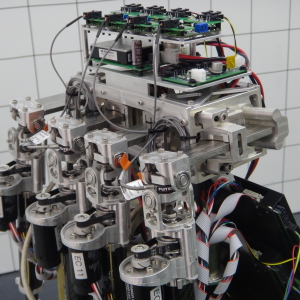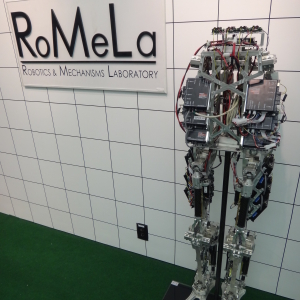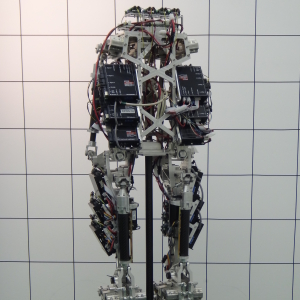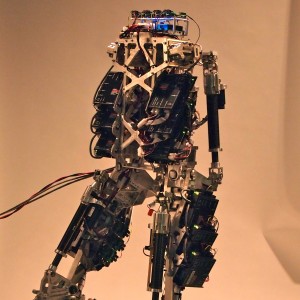The SAFFiR project is to design a bio-inspired bipedal robot utilized for finding and extinguishing fires aboard naval ships. The first full-fledged robot in this project, named ASH (Autonomous Shipboard Humanoid), is powered by custom linear serial elastic actuators that incorporate custom titanium springs. It will utilize an advanced sensor suite to navigate the difficult environment caused by smoke, heat, and water vapor. ASH is designed to use many available fire suppression methods including hoses, fire extinguishers, and PEAT canisters. It will be protected by high-temperature thermal shielding, and is designed to traverse a ship environment including difficulties such as stepping over sills and walking in sea state conditions. This project is sponsored by the Office of Naval Research. (ONR)
Mechanical Goals and Objectives
RoMeLa is collaborating with three other laboratories for the total SAFFiR project:
The EXTREME Lab at Virginia Tech with Dr. Brian Lattimer. Their portion involves research and design for heat shielding as well as sensors suitable for the smoky, hot, all-metal environment during a ship-fire.
The GRASP Lab at University of Pennsylvania and Dr. Daniel Lee. They are investigating the suitable navigation and autonomy decisions to locate a fire, navigate the ship’s interior, and perform high-level behavioral reasoning.
The Naval Research Lab with John Farley, Dr. Alan Schultz, and Dr. Susan Rose-Pehrsson. The NRL is developing the human robot interaction capabilities, fire suppression techniques, and the suite of fire monitoring sensors.




